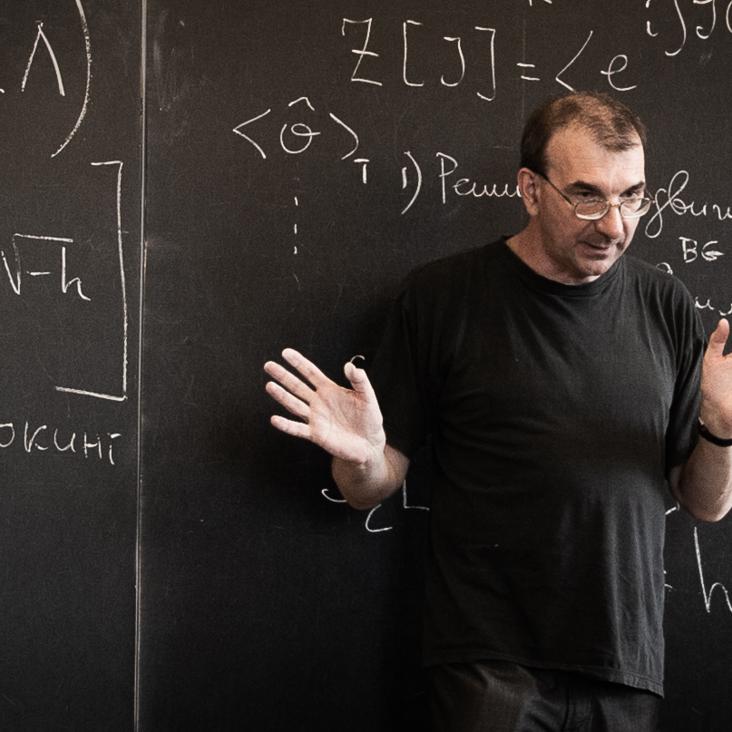Holographic zero sound at finite temperature
Physical Review D - Particles, Fields, Gravitation and Cosmology 85:2 (2012)
Abstract:
We use gauge-gravity duality to study the temperature dependence of the zero sound mode and the fundamental matter diffusion mode in the strongly coupled N=4 SU(N c) supersymmetric Yang-Mills theory with N f N=2 hypermultiplets in the N c≫ 1, N c ≫ N f limit, which is holographically realized via the D3/D7 brane system. In the high density limit μ≫T, three regimes can be identified in the behavior of these modes, analogous to the collisionless quantum, collisionless thermal, and hydrodynamic regimes of a Landau Fermi liquid. The transitions between the three regimes are characterized by the parameters T/μ and (T/μ) 2, respectively, and in each of these regimes the modes have a distinctively different temperature and momentum dependence. The collisionless-hydrodynamic transition occurs when the zero sound poles of the density-density correlator in the complex frequency plane collide on the imaginary axis to produce a hydrodynamic diffusion pole. We observe that the properties characteristic of a Landau Fermi-liquid zero sound mode are present in the D3/D7 system despite the atypical T 6/μ 3 temperature scaling of the specific heat and an apparent lack of a directly identifiable Fermi surface. © 2012 American Physical Society.Holographic zero sound at finite temperature
Physical Review D American Physical Society (APS) 85:2 (2012) 026004
Quasinormal modes of black holes and black branes
Classical and Quantum Gravity 26:16 (2009)


